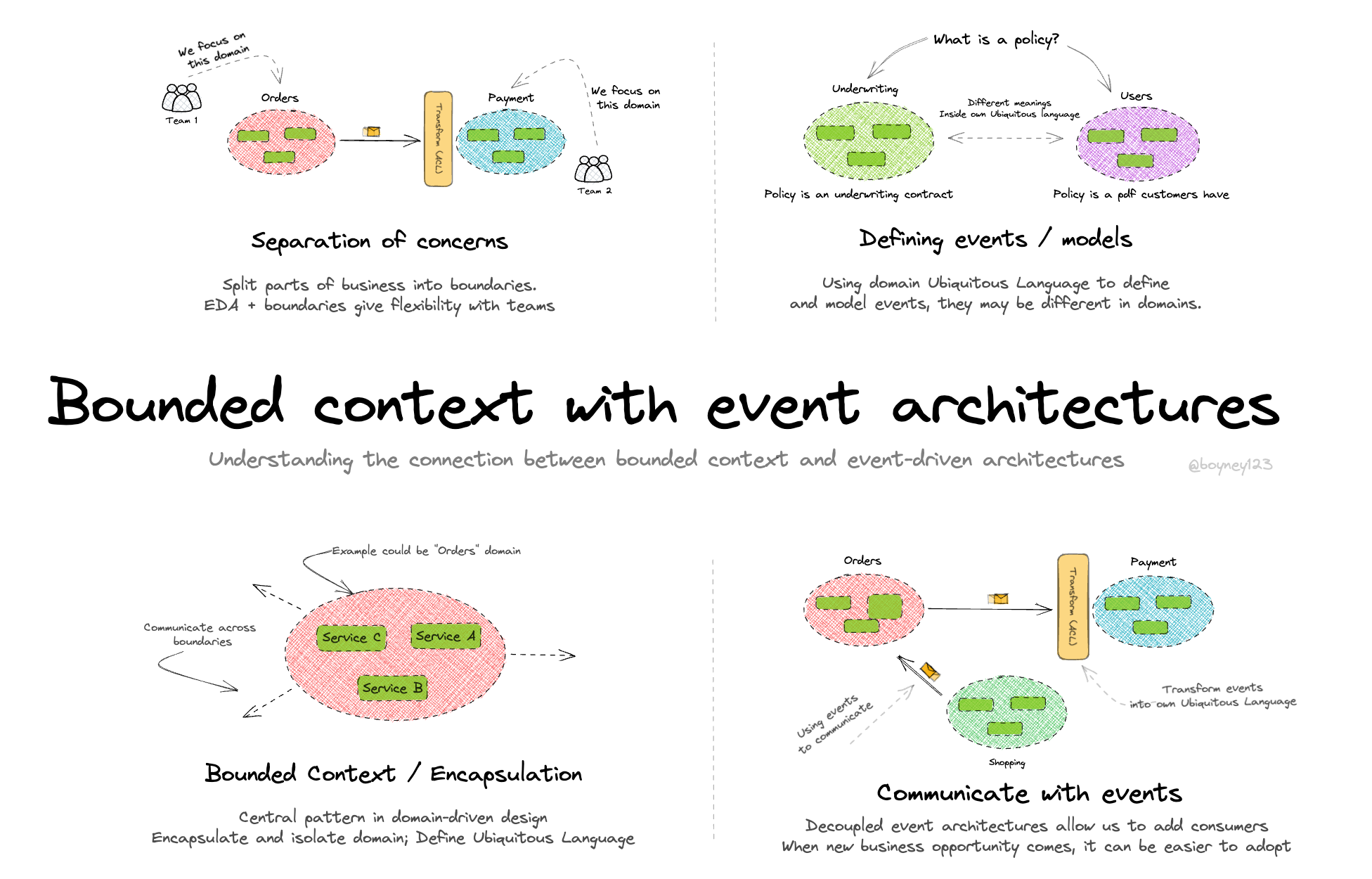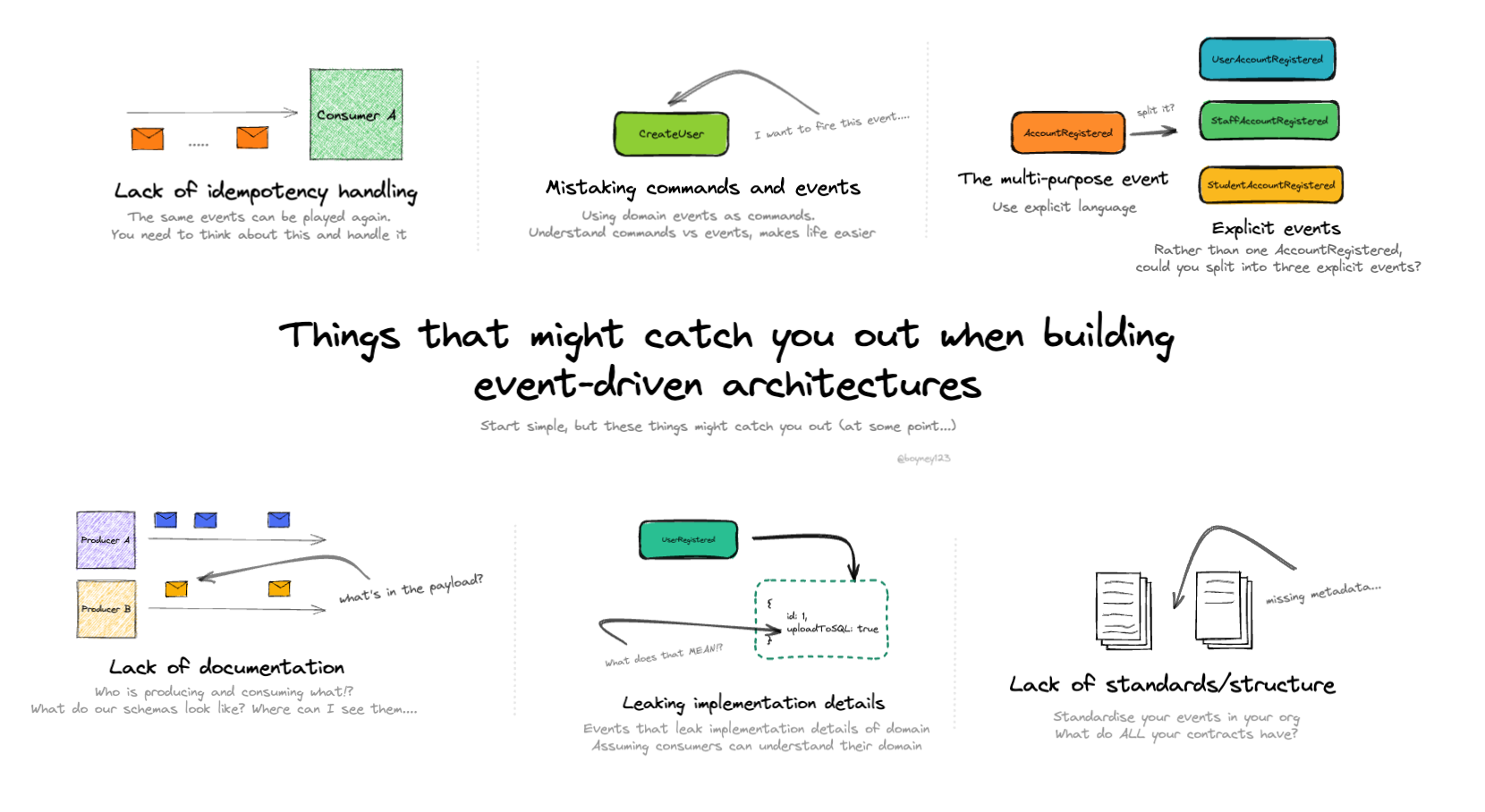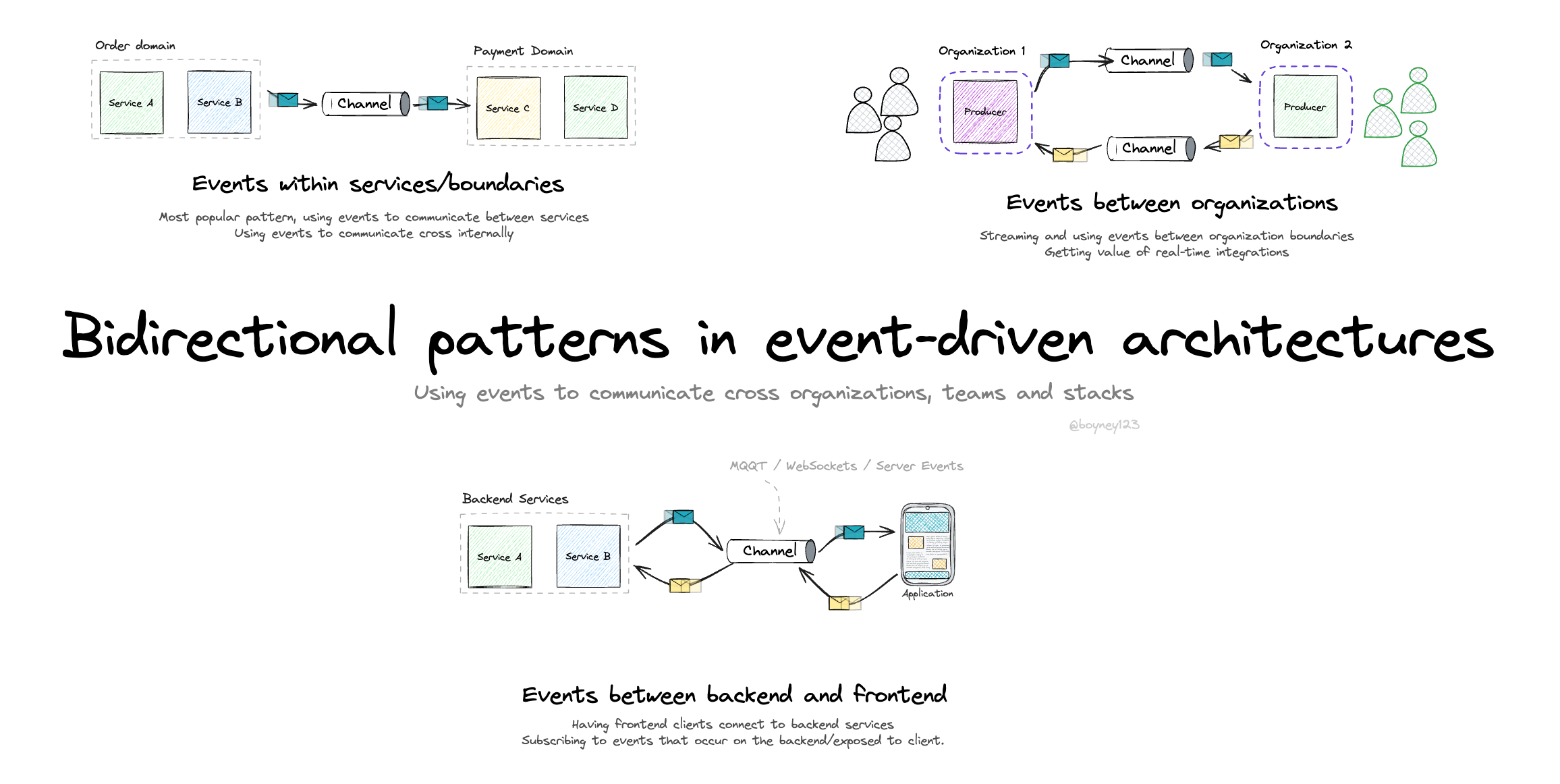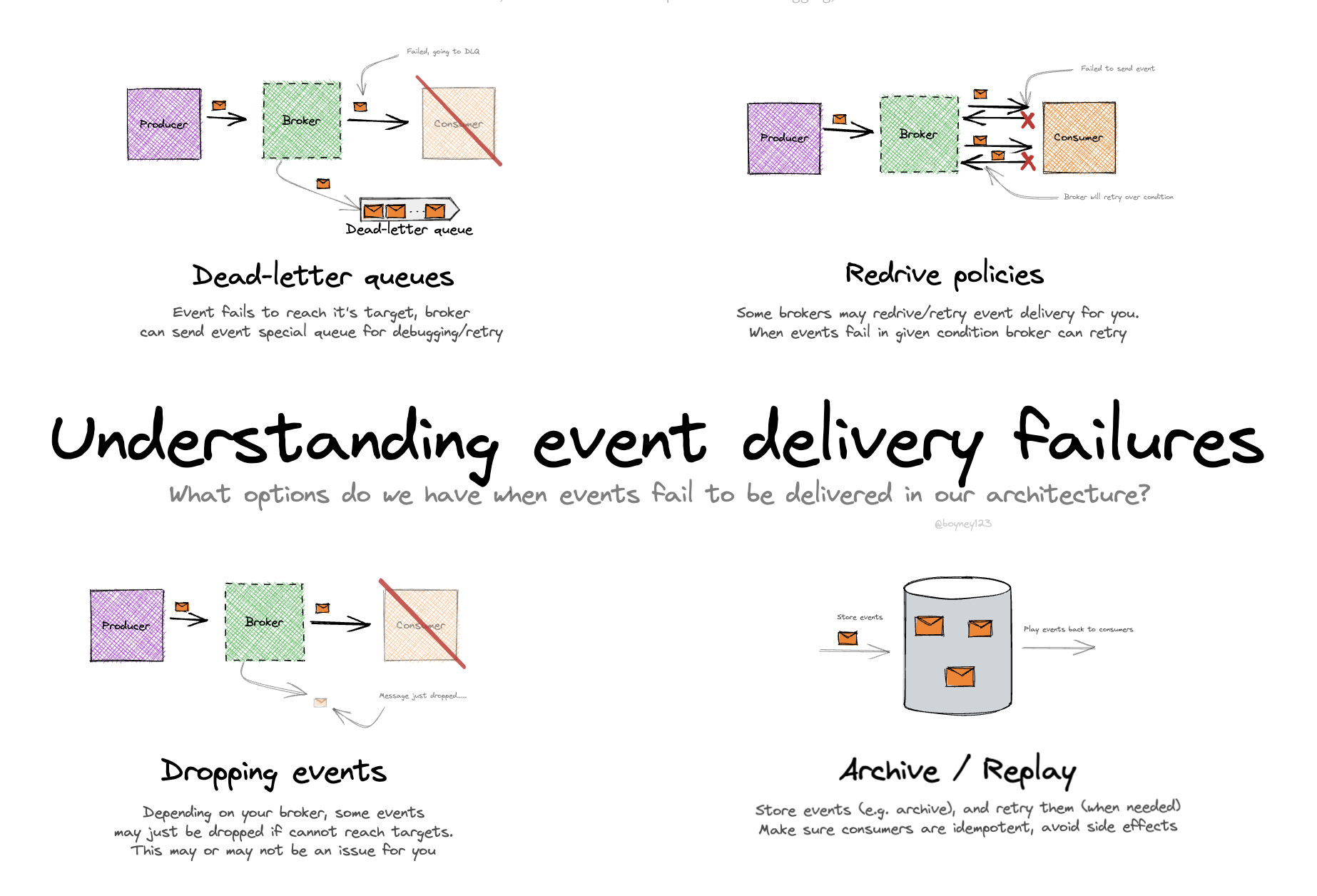Bounded context with event architectures By David Boyne
Bounded context with event architectures By David Boyne

Learning event-driven architecture?
I built EventCatalog — an open-source tool that helps you visualize, document, and understand how events, services, and domains connect in event-driven architectures.
Perfect for learning: Create visual diagrams, document your first events, and see how everything connects. Get started for free →
Bounded Context
- A central pattern in domain-driven design
- A contextual boundary as part of your domain.
- Has it’s own set of concepts and it’s own Ubiquouts Language.
- Provides a way to isolate and encapsulate parts of your system
- Great pattern to define boundaries for event-driven architectures
- Common patterns are to use events to communicate between boundaries.
Defining events / models
- Each boundary has its own language, use this language to define events and schemas within your boundary.
- You may have internal and external events within a boundary. External events may be used to communicate with other boundaries.
- Models may differ from boundaries, it’s important to understand different context mapping patterns you can use to transform events/messages before consuming them.
- Consuming an event directly into your boundary could couple you to the model of another boundary, think about that before you do it.
Communicate with events
- Event architectures allow us to define producers and consumers, theses producers and consumers can live across boundaries in your system, and event-driven architectures give us a great ability to communicate between these systems.
- If you follow domain-driven design practices with clear boundaries, you will have decoupled areas of your system, event architectures are a great way to keep decoupled, these go hand in hand.
Separation of concerns
- A big benefit of event-driven architectures is they allow us to be decoupled. This means changes to consumers have limited impact on other consumers/producers.
- If you have clear boundaries in your system and use event-driven architectures to help you can start to form a clear separation of concerns for your organisation and tech teams, allowing to scale solutions and teams faster.
Extra Resources
- Good and hard parts of EDA - Understand the good and hard parts of EDA, defining clear boundaries is just part of the whole picture, it’s important to explore more.
- What is Ubiquitous Language? - Visual here to help you understand what Ubiquitous Language is, and why it’s important.
- Transforming data between boundaries - When you consume events/messages between boundaries you may not want to take it as it is (raw), do you want to translate the data into your own domain? The answer, probably yes.
- Internal and external events - Firing events within your boundary, firing events outside? Integration? What does it all mean?
Explore other visuals
Want to work together?
If you're interested in collaborating, I offer consulting, training, and workshops. I can support you throughout your event-driven architecture journey, from design to implementation. Feel free to reach out to discuss how we can work together, or explore my services on EventCatalog.
EDA Visuals: The book
Join over 13,000 others learning EDA and download all the EDA visuals directly to your computer.
This book contains all the visuals in one book, you can download, read offline and explore.
If you would like to support my work, you can purchase the book. This helps keeping the visuals free for the community. Purchase the book



